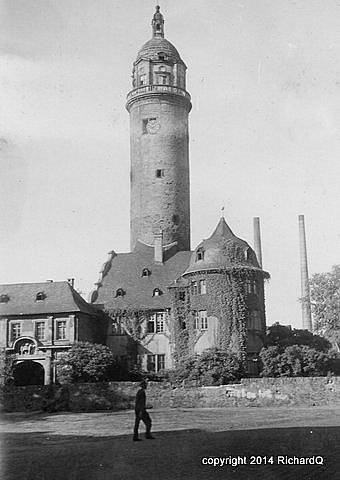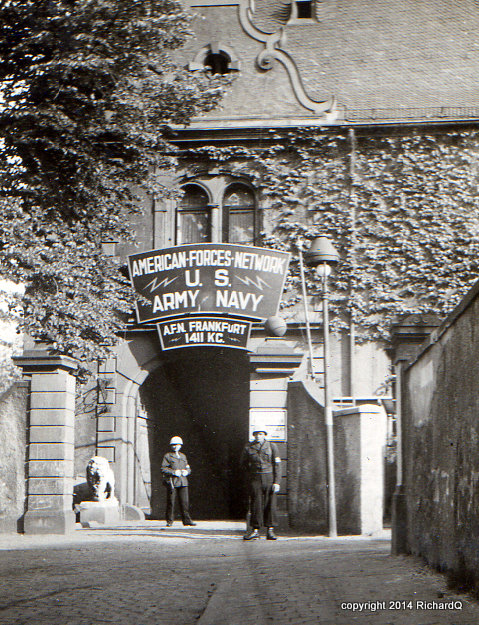Record Albums
Jan 4, 2016 23:41:08 #
RichardQ wrote:
Sorry. I should have sent a private message!
:| :roll:
:| :roll:
You're forgiven. ;-)
Jan 5, 2016 16:23:34 #
jboy24
Loc: Downey Ca,
Jim Bob wrote:
And this thread is related to photography, how?
RichardQ Wrote
Vinyl and even CDs are an archive resource that we may lose, especially from the independent musicians, as is the album art which frequently brings us back to photography!
Jan 6, 2016 00:33:02 #
OddJobber wrote:
Why are you guys messing around with those tiny 78's and 33 1/3's??
When my dad worked for radio stations toward the end of WWII and prior to long play in '48, a 12 inch record would only play for 5 minutes. This limitation was overcome by recording on 20-inch records that were good for 20 minutes.
I had a pile of those but trashed them because I couldn't find a turntable that would handle that size. :)
When my dad worked for radio stations toward the end of WWII and prior to long play in '48, a 12 inch record would only play for 5 minutes. This limitation was overcome by recording on 20-inch records that were good for 20 minutes.
I had a pile of those but trashed them because I couldn't find a turntable that would handle that size. :)
Those radio station records played at 16-2/3 rpm. I was in occupied Germany from 1945 t0 late 1948. In my last year, I was near the Armed Forces Radio Network (AFN) station in Hoechst and got to know a few guys. They let me borrow some of those discs in their library from time to time so I could climb up into the castle tower where they had a couple of those special turntables. I'd sit there alone for hours listening to music. I eventually found a couple of Germans who built me an AM-radio/78-rpm phono console for 10 cartons of cigarettes. There was no FM those days, nor were there vinyl or LP records in Europe. But there were plenty of used shellac 78s.
Castle housing AFN Radio Frankfurt station in Hoechst, Occupied Germany (1948)

Polish DP guards at main entrance to AFN Radio studios

Jan 6, 2016 02:25:58 #
I imagine some of the Hoggers know the reputation of a late photographer named W. Eugene Smith, who shot photo essays for LIFE magazine and Magnum (a co-op agency for important photographers). He also was a music nut and photographed many jazz musicians who hung out with him in a loft in NYC.
In early 1955 he accepted a major free-lance job commissioned by an editor and historian to produce a large book about Pittsburgh. It was supposed to last three weeks. When Smith arrived, the editor was astounded to see him unloading about 20 pieces of luggage, books, and a record player, and hundreds of records.
The following is a synopsis of a 2001 essay by Sam Stephenson which might interest Hoggers. Smith wandered around Pittsburgh for three weeks without taking a single shot. Then, for almost a year, he exposed more than 13,000 b/w negatives. After a fierce battle with the editor, Smith delivered several hundred prints to him to use as he chose. Then Smith left Pittsburgh and wangled two Guggenheim Fellowships so he could spend the next three years printing and planning layouts. A fanatic perfectionist, he turned down offers of some $20,000 [equivalent to more than $95,000 today] from LIFE and LOOK magazines, because they would not agree to his demands for editorial control. Smith finally reduced the collection to 2,000 5x7 work prints, and then pared the work down to about 600 master prints which are in his archive at the Center for Creative Photography and the collection of the Carnegie Museum of Art in Pittsburgh. In late 1958, Popular Photography's Annual published 88 of the pictures and paid him $1,700. (Smith called the layout a "debacle".)
His most famous photo essays included "Spanish Village," "Country Doctor", "Nurse-Midwife," "Welsh Coalminers," "Dr. Albert Schweitzer in Africa," "Minimata" (the consequences of a Japanese radioactivity leak in 1972), and others. Smith died at age 59 in 1978 in Tuscon, Arizona, where he was teaching in the Center for Creative Photography at the University of Arizona.
In early 1955 he accepted a major free-lance job commissioned by an editor and historian to produce a large book about Pittsburgh. It was supposed to last three weeks. When Smith arrived, the editor was astounded to see him unloading about 20 pieces of luggage, books, and a record player, and hundreds of records.
The following is a synopsis of a 2001 essay by Sam Stephenson which might interest Hoggers. Smith wandered around Pittsburgh for three weeks without taking a single shot. Then, for almost a year, he exposed more than 13,000 b/w negatives. After a fierce battle with the editor, Smith delivered several hundred prints to him to use as he chose. Then Smith left Pittsburgh and wangled two Guggenheim Fellowships so he could spend the next three years printing and planning layouts. A fanatic perfectionist, he turned down offers of some $20,000 [equivalent to more than $95,000 today] from LIFE and LOOK magazines, because they would not agree to his demands for editorial control. Smith finally reduced the collection to 2,000 5x7 work prints, and then pared the work down to about 600 master prints which are in his archive at the Center for Creative Photography and the collection of the Carnegie Museum of Art in Pittsburgh. In late 1958, Popular Photography's Annual published 88 of the pictures and paid him $1,700. (Smith called the layout a "debacle".)
His most famous photo essays included "Spanish Village," "Country Doctor", "Nurse-Midwife," "Welsh Coalminers," "Dr. Albert Schweitzer in Africa," "Minimata" (the consequences of a Japanese radioactivity leak in 1972), and others. Smith died at age 59 in 1978 in Tuscon, Arizona, where he was teaching in the Center for Creative Photography at the University of Arizona.
Jan 6, 2016 14:37:50 #
RichardQ wrote:
Those radio station records played at 16-2/3 rpm. ... (show quote)
Great Shot!! The Germans are currently producing some of the best audio gear in the high end world today. Cost big bucks.
As i sit here and write this quote to you, I'm digitizing a record from 1958
Frankie Carle (Piano medley) sheer heaven, Due you remember him?.
My cousin Angelo was a pilot shot down in Germany badly burnt, the German people who found him nurse him until the Gustoppo arrested him.
he was put in St alack 17,when the Germans found out that he could play the accordion they gave him one. He credits that for them saving his life. Go for the Gusto old timer! and thank you for your service.
Jan 6, 2016 16:57:29 #
floral43 wrote:
when the Germans found out that he could play the accordion they gave him one. He credits that for them saving his life.
HOORAY for the accordionist!!! Wow, a lifesaver!!! There is hope for me...
If you want to reply, then register here. Registration is free and your account is created instantly, so you can post right away.

